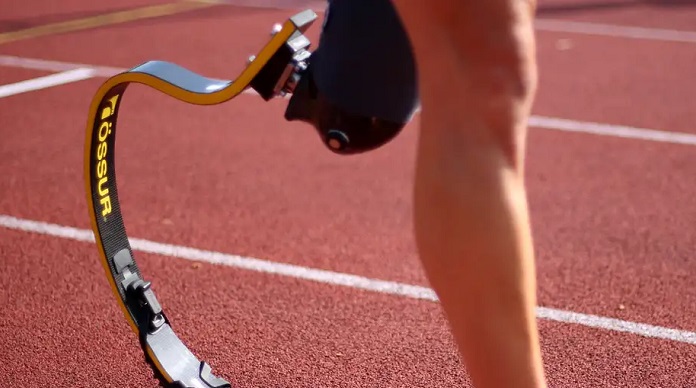
Amputees often feel a phantom pain where the lost limb used to be. The brain is confused. But mirror therapy can help — perhaps better than painkillers.
The question "Where does it hurt?" is not easy to answer for Thomas Frey — his aching leg no longer exists.
Frey lost his leg in a serious accident more than 30 years ago. But almost immediately after he lost it, he felt a severe pain — right there, where his leg used to be.
It's what's known as phantom limb pain, or simply phantom pain. And it's quite common: more than 70% of amputees experience phantom pain.
People can get phantom pain after losing arms and legs or other body parts, including breasts after a mastectomy, as well as teeth.
The pain often begins soon after the amputation, but it can take months to emerge. As in Frey's case, the pain is often chronic and can affect people for the rest of their lives.
Frey said it was like a migraine: "Impulses that last a few seconds. Then it's quiet again for five minutes. It can go on for hours."
The pain is unbearable, said Frey, and restricts him in his everyday life. "[When I have] phantom pain, I can't meet friends for dinner, I can't go to meetings," he said.
It can be difficult for friends, colleagues and even family to understand and empathize.
"I still remember my father's reaction. He'd say: 'Don't make a fuss,'" recalled Frey.
Phantom pain: A neurological condition
There are references to "phantom pain" in the medical literature as far back as the 16th century, but researchers are still trying to explain the phenomenon.
Thomas Weiss, a physiologist who has studied phantom pain intensively, said the current thinking is that "an amputation changes the entire nervous system."
In other words, nerve pathways change in the residual limb, and also in the spinal cord and brain.
Some of the most significant changes are in an area of the brain known as the primary somatosensory cortex. This area perceives stimuli on the body such as touch, pressure or temperature, and is therefore also called the tactile cortex.
Each part of the body is assigned its own area in the tactile cortex, and together, they form a kind of corporeal map.
When a part of the body is amputated, its associated brain region stops receiving signals. "The regions are, if you like, unemployed," said Weiss.
The neighboring areas in the brain then start providing stimuli to the unused region of the brain once responsible for the amputated body part. "This is called functional reorganization, or functional restructuring," he said.
It's what an adaptive brain does: the neuronal network adapts to new requirements, and that is often a good thing. But it's not necessarily good for amputees. "People who have a particularly adaptive brain are more likely to suffer from phantom pain," said Weiss.
But these changes in the primary somatosensory cortex do not fully explain the phenomenon, said Weiss. Today, researchers are looking into other areas of the nervous system to find out how they contribute to phantom pain. They are also investigating possible genetic causes for it.
The search is complex because the pain is different for each individual. "Some amputees have no phantom pain at all, and some have pain that is so severe that they become suicidal," said Weiss.
How phantom pain is treated
In some cases, strong pain medication can help alleviate phantom limb pain. But painkillers can also have severe side effects — a further burden for sufferers like Frey.
But the research into the neurological origins of phantom limb pain has also led to a particularly successful treatment called mirror therapy.
Frey has tried the method. During therapy, he moved his healthy leg in front of a mirror. The reflection in the mirror tricks the brain, and the movement is linked to the amputated leg. The malformed and pain-causing structures in the tactile cortex partially regress and the phantom pain decreases.
"The moment I do it, I feel energy start to flow," said Frey, describing his experience. It has enabled him to stop taking strong pain medication. Mirror therapy can even work without a mirror: Apps and virtual reality experiences can create the same effect.
For Frey, however, the attitude with which he faces his pain is also crucial.
"The problem with chronic pain patients is that they declare war on the pain and turn it into an enemy," said Frey. But he changed this attitude by accepting the pain as part of his life. "I had to make the pain my friend."